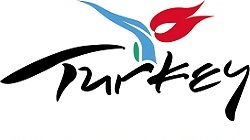Turkiye, the Mediterranean, the Marmara, the Aegean and Black Seas, Europe and the Middle East, is surrounded by seas on three sides, and from a bird's eye view it resembles a rectangle. Turkiye is a Republic with a democratic government.

Geographical structure
The territory of Turkiye lies between 36 ° -42 ° N and 26 ° -45 ° E. The territory resembles a rectangle, and the length of the territory is 1660 km. Including lakes, the area of Turkiye is 814,578 square kilometers. The length of the land borders of Turkiye is 2,573 km, and the length of its coastline along with the islands is 8,333 km. Neighboring countries of Turkiye are Bulgaria and Greece from the west, Georgia, Armenia, Azerbaijan and Iran from the east, Iraq and Syria from the south.
Geographically, Turkiye is one of the richest regions in the world. More than half of the country consists of areas above 1000 m above sea level. Approximately one third of the country is covered by plains of medium height and mountains, and one-tenth - by low-lying areas. The highest and mountainous region is located in the eastern part of the country. The northern Anatolian mountains are located in the northern part, and the Taurus Mountains are in the southern, eastern and south-eastern parts. The highest point of the country, which reaches 5166 m, is the peak of Mount Ararat. The main plains of the Çukurova region are the Konya plain and the Harran plain. The longest river, 1355 km long from the source point and to the point where it flows into the sea, is the Kizilirmak River. The largest natural lake is Lake Van, covering 3,713 square kilometers. The dam. Atatürk, which covers 817 square kilometers, is the largest artificial lake in the country. The largest island of Turkiye, the Gökçeada skeleton, has an area of 279 square kilometers.
Climate
Being surrounded by four seas and having varied forms of terrain and mountain heights, Turkiye has the most diverse types of climate in different regions. In coastal regions, due to the influence of the sea, the climate is more moderate. The Northern Anatolian Mountains and the Taurus Mountains prevent the impact of the seas on the interior regions. Because of this, the continental climate is observed in the interior regions. Turkiye, which is on par with Spain, has relatively fewer problems with water due to rain and snow falling to the Anatolian plateau 1000 meters high. 8000-year-old Çukurova valleys, as well as the coast of the Aegean Sea, the Bafra and Çarşamba valleys are considered one of the most fertile soils in the world. With the exception of tropical plants, 90% of the world's vegetables and fruits are grown in Turkiye.
Source: Ministry of Health of the Republic of Turkiye

WE INVITE YOU TO TURKEY FOR HEALTH!

WE INVITE YOU TO TURKEY FOR HEALTH!

WE INVITE YOU TO TURKEY FOR HEALTH!

WE INVITE YOU TO TURKEY FOR HEALTH!
